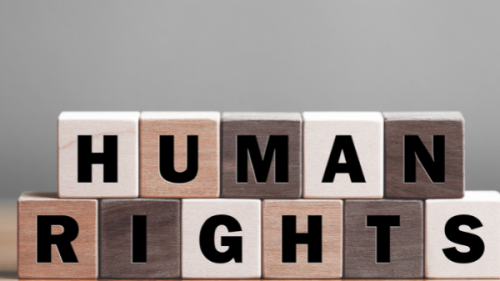Setting human rights governance objectives: your step-by-step guide
Posted on 23rd May 2022
Human rights are every company’s business. They consist of the universal freedoms every human being deserves, based on equality, fairness, dignity and respect.
The way companies conduct themselves affects the human rights of everyone they work with, internally and externally. While most people want to do the right thing, does everyone in your organisation agree on what that is? Are they taking coordinated action to achieve it?
This is where human rights governance objectives come in. This guide explains the steps you can take to set human rights governance objectives for your company that meet the UN Guiding Principles on Business and Human Rights.
- Know the Guiding Principles
The UN Guiding Principles on Business and Human Rights are a worldwide standard that outlines the human rights responsibilities of businesses and governments.
? States and companies must ensure effective judicial and non-judicial remedies for people whose human rights have been abused.
? Companies must respect human rights, not infringe on the rights of others, and address any human rights infringements that affect them.
? States must protect people against human rights abuses by third parties like businesses through regulation, policies, or adjudication.
While there’s no universal standard on how to set human rights governance objectives, there is a general consensus that they should cover two main areas: governance and management, and operations.
Governance and management
If you want your Corporate Social Responsibility (CSR) principles to have the most impact, you need to integrate them into your company's governance and management processes. CSR governance should start with the senior leadership and board of directors. Make sure the management team is on board with your high-level governance arrangements and publicly endorses them.
Operations
With any cross-functional initiative, it’s vital to make sure every function and department realises the importance of human rights due diligence. You also need to look at how due diligence impacts the day-to-day activities of your employees and how the senior leadership assesses their performance. Every function and department should have clear human rights objectives based on specific activities.
- Develop a Strategy
The next step is to develop a human rights strategy that provides support among senior leaders, directors, and employees.
? Prepare a matrix of proposed actions and ideas
? Decide on your approach, focus areas, and boundaries
? Include a mission statement, commitments, policies and procedures, KPIs, and a clear allocation of responsibilities.
Commitments
Set human rights governance objectives aligned to:
? Compliance with regulatory and legal requirements
? Employee and contractor health and safety
? Employee development
? Ethical procurement and human rights in the supply chain
? Maximisation of new technology
? Performance targets
? Resource use and waste management
? Transparency and lack of unethical persuasion
Define a target level for performance on each of these commitments. Prioritise managing material risks and meeting your stakeholders’ expectations.
Processes and procedures
Create procedures to support your company in implementing its human rights strategies across all the business functions and activities. You also need to create processes to identify risks and opportunities related to human rights in the context of cultural, political, social, and economic conditions.
A demonstrable commitment to human rights will improve your talent attraction and retention, employee motivation, stakeholder relations and risk assessment.
